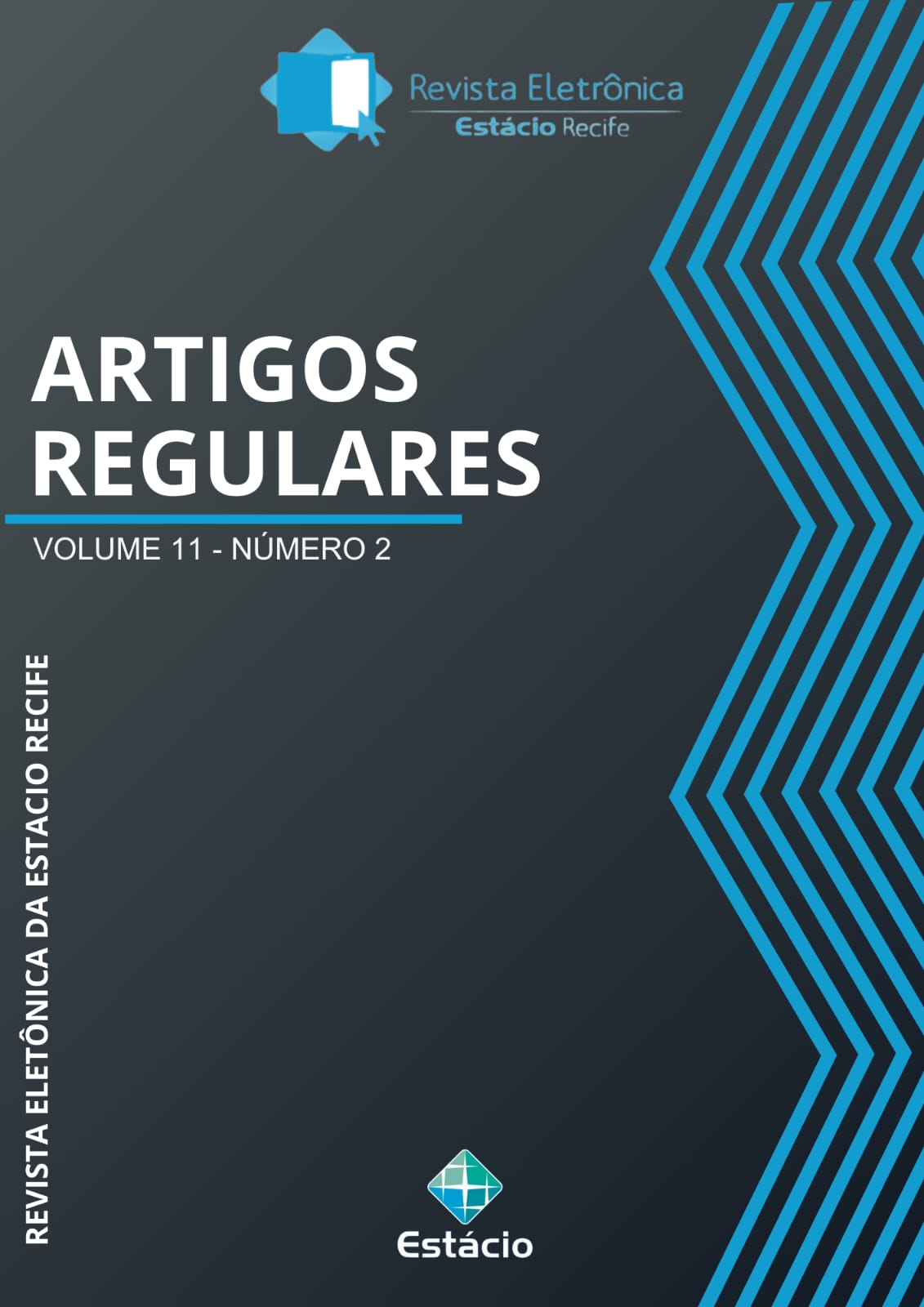PATOGÊNESE DE STAPHYLOCOCCUS AUREUS:
O PAPEL DAS TOXINAS NA INFECÇÃO E DISSEMINAÇÃO
Mots-clés :
Enterotoxinas, Hemolisinas, Patogênese, Resposta inflamatória sistêmica, Síndrome do Choque TóxicoRésumé
Staphylococcus aureus destaca-se como um dos principais patógenos humanos e animais devido à sua capacidade de produzir uma variedade de toxinas que promovem infecções complexas e potencialmente fatais. As toxinas estafilocócicas, incluindo as enterotoxinas, TSST-1, toxinas esfoliativas e hemolisinas, têm papel central na patogênese das infecções estafilocócicas, atuando em diversas etapas do processo infeccioso: desde a invasão inicial dos tecidos até a evasão da resposta imune do hospedeiro. As enterotoxinas, por exemplo, são a principal causa de intoxicações alimentares por S. aureus, enquanto a TSST-1 e as toxinas esfoliativas estão associadas a síndromes sistêmicas graves, como a Síndrome do Choque Tóxico, que caracterizada por uma resposta inflamatória sistêmica intensa, frequentemente associada à produção de toxinas bacterianas. As toxinas hemolíticas, como alfa-toxina, beta-toxina, delta-toxina e gama-toxinas, facilitam a disseminação do patógeno ao destruir células do sistema imunológico e outros tecidos, o que permite que S. aureus alcance áreas protegidas do organismo e obtenha nutrientes essenciais para sua sobrevivência. Em conjunto, essas toxinas conferem a S. aureus uma adaptabilidade notável, permitindo que ele cause desde infecções superficiais até doenças sistêmicas e fatais. O entendimento aprofundado das características e dos mecanismos de ação das toxinas de S. aureus é essencial para o desenvolvimento de estratégias de prevenção e tratamento.
Téléchargements
Références
Ahmad-Mansour N, Loubet P, Pouget C, et al. Staphylococcus aureus Toxins: An Update on Their Pathogenic Properties and Potential Treatments. Toxins (Basel). v. 13, n. 10, 677, Sep. 2021. Doi: 10.3390/toxins13100677.
Atchade E, De Tymowski C, Grall N, Tanaka S, Montravers P. Toxic Shock Syndrome: A Literature Review. Antibiotics (Basel). v. 13, n. 1, 96. Jan. 2024. Doi: 10.3390/antibiotics13010096
Bachert C, Humbert M, Hanania NA, et al. Staphylococcus aureus and its IgE-inducing enterotoxins in asthma: current knowledge. Eur Respir J. v. 55, n. 4, 1901592, Apr. 2020. doi:10.1183/13993003.01592-2019.
Bai AD, Lo CKL, Komorowski AS, et al. Staphylococcus aureus bacteraemia mortality: a systematic review and meta-analysis. Clin Microbiol Infect. V. 28, n. 8, p. 1076-1084, Aug. 2022. doi:10.1016/j.cmi.2022.03.015.
Barros Pinto MP. Staphylococcal toxic shock syndrome. J Hematop. v. 16, n. 3, p. 189-190, Sep. 2023. Doi: 10.1007/s12308-023-00547-6.
Bian N, Chen X, Ren X, et al. 7, 8-Dihydroxyflavone attenuates the virulence of Staphylococcus aureus by inhibiting alpha-hemolysin. World J Microbiol Biotechnol. V. 38, n. 11, 200, Aug. 2022. Doi: 10.1007/s11274-022-03378-2.
Chen H, Zhang J, He Y, et al. Exploring the Role of Staphylococcus aureus in Inflammatory Diseases. Toxins (Basel). v. 14, n. 7, 464, Jul. 2022. Doi: 10.3390/toxins14070464.
Chen J, Lv Y, Shang W, et al. Loaded delta-hemolysin shapes the properties of Staphylococcus aureus membrane vesicles. Front Microbiol. v. 14 1254367, Oct. 2023. doi:10.3389/fmicb.2023.1254367.
Cheung GYC, Bae JS, Otto M. Pathogenicity and virulence of Staphylococcus aureus. Virulence. V. 12, n. 1, p. 547-569, Dec. 2021. doi:10.1080/21505594.2021.1878688.
Chi SI, Ramirez-Arcos S. Staphylococcal Enterotoxins Enhance Biofilm Formation by Staphylococcus aureus in Platelet Concentrates. Microorganisms. V. 11 n. 1, 89, Dec. 2022. Doi: 10.3390/microorganisms11010089.
Goc A, Sumera W, Rath M, Niedzwiecki A. Inhibition of α-hemolysin activity of Staphylococcus aureus by theaflavin 3,3'-digallate. PLoS One. v. 18, n. 8, e0290904, Aug. 2023. doi:10.1371/journal.pone.0290904.
Guo Y, Song G, Sun M, Wang J, Wang Y. Prevalence and Therapies of Antibiotic-Resistance in Staphylococcus aureus. Front Cell Infect Microbiol. v. 10, 107, Mar. 2020. doi:10.3389/fcimb.2020.00107.
Jahn K, Handtke S, Palankar R, et al. α-hemolysin of Staphylococcus aureus impairs thrombus formation. J Thromb Haemost. V. 20, n. 6, p. 1464-1475, jun. 2022. doi:10.1111/jth.15703.
Jordan PM, Gerstmeier J, Pace S, et al. Staphylococcus aureus-Derived α-Hemolysin Evokes Generation of Specialized Pro-resolving Mediators Promoting Inflammation Resolution. Cell Rep. V. 33, n. 2, 108247, Oct. 2020. doi:10.1016/j.celrep.2020.108247.
Kwiecinski JM, Horswill AR. Staphylococcus aureus bloodstream infections: pathogenesis and regulatory mechanisms. Curr Opin Microbiol. V. 53, p. 51-60, Fev. 2020. doi:10.1016/j.mib.2020.02.005.
Li Q, Dou L, Zhang Y, et al. A comprehensive review on the detection of Staphylococcus aureus enterotoxins in food samples. Compr Rev Food Sci Food Saf. V. 23, n. 1, e13264, Jan. 2024. doi:10.1111/1541-4337.13264.
Löffler B, Tuchscherr L. Staphylococcus aureus Toxins: Promoter or Handicap during Infection? Toxins (Basel). V. 13, n. 4, 287, Apr. 2021. Doi: 10.3390/toxins13040287.
Minter DJ, Appa A, Chambers HF, Doernberg SB. Contemporary Management of Staphylococcus aureus Bacteremia-Controversies in Clinical Practice. Clin Infect Dis. V. 77, n. 11, e57-e68, Nov. 2023. doi:10.1093/cid/ciad500.
Oliveira R, Pinho E, Almeida G, Azevedo NF, Almeida C. Prevalence and Diversity of Staphylococcus aureus and Staphylococcal Enterotoxins in Raw Milk From Northern Portugal. Front Microbiol. v. 13, 846653, Mar. 2022. doi:10.3389/fmicb.2022.846653.
Pivard M, Caldelari I, Brun V, et al. Complex Regulation of Gamma-Hemolysin Expression Impacts Staphylococcus aureus Virulence. Microbiol Spectr. V. 11, n. 4, e0107323, Aug. 2023. doi:10.1128/spectrum.01073-23.
Sapugahawatte DN, Li C, Yeoh YK, Dharmaratne P, Zhu C, Ip M. Swine methicillin-resistant Staphylococcus aureus carrying toxic-shock syndrome toxin gene in Hong Kong, China. Emerg Microbes Infect. v. 9, n. 1, p. 1534-1536, Dec. 2020. doi:10.1080/22221751.2020.1785335.
Schlievert PM, Gaitán AV, Kilgore SH, et al. Inhibition of Toxic Shock Syndrome-Associated Staphylococcus aureus by Probiotic Lactobacilli. Microbiol Spectr. v. 11, n. 4, e0173523, Jul. 2023. doi:10.1128/spectrum.01735-23.
Tabah A, Laupland KB. Update on Staphylococcus aureus bacteraemia. Curr Opin Crit Care. v. 28, n. 5, p. 495-504, Oct. 2022. doi:10.1097/MCC.0000000000000974.
Tasneem U, Mehmood K, Majid M, Ullah SR, Andleeb S. Methicillin resistant Staphylococcus aureus: A brief review of virulence and resistance. J Pak Med Assoc. v. 72, n. 3, p. 509-515, 2022. Doi:10.47391/JPMA.0504.
Zhu Z, Hu Z, Li S, Fang R, Ono HK, Hu DL. Molecular Characteristics and Pathogenicity of Staphylococcus aureus Exotoxins. Int J Mol Sci. v. 25, n. 1, 395, Dec 2023. doi:10.3390/ijms25010395.
Téléchargements
Publié-e
Comment citer
Numéro
Rubrique
Licence
Os trabalhos publicados passam a ser propriedade da REER, devendo após a publicação ser informada a respectiva fonte.
O conteúdo, bem como as opiniões nos artigos são de exclusiva responsabilidade dos autores.

